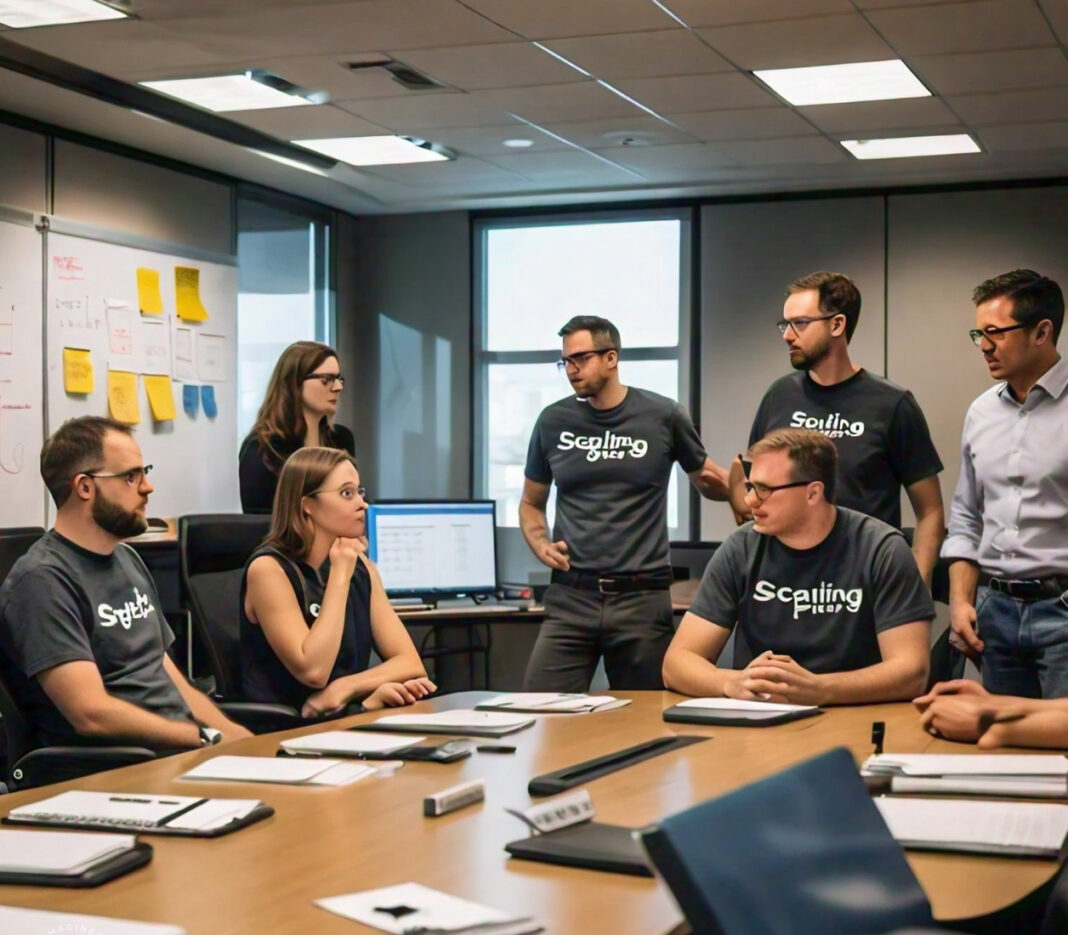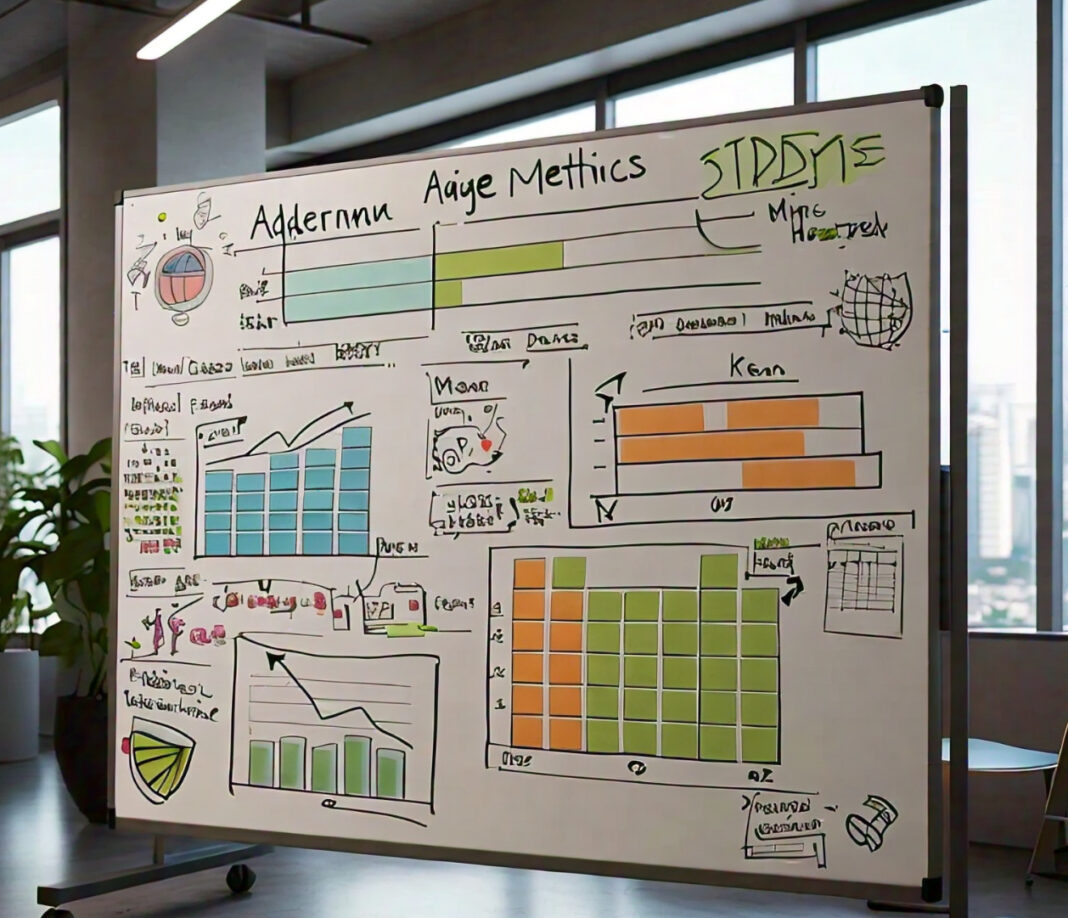By adopting the Agile methodologies, now becoming more flexible to be ‘in tune’ with their customers
needs and to increase overall efficiency besides the competitive scenario in the business world.
Although agile frameworks like Scrum and Kanban have great value in a small-team context, scaling Agile in large organizations yields a new set of complexities that require tailor-made approaches.

The article talks about a few of the well-known frameworks designed to scale Agile in large organizations: SAFe, Large Scale Scrum, Disciplined Agile Delivery, and the Spotify Model.
The Need for Scaling Agile
Agile methodologies are very much focused on iterative development, collaboration, and
adaptability. As these principles move into larger organizations, they encounter other issues, such as
coordination among several teams and keeping alignment with business goals while handling
dependencies. Various scaling frameworks have been developed to extend Agile principles across
multiple teams and departments, hence addressing these challenges.
Scaled Agile Framework (SAFe)
Overview:
Amongst the most adopted frameworks for scaling Agile in large enterprises is the Scaled Agile
Framework. SAFe combines the principles of Agile, lean, and product development flow to deliver a
comprehensive way of scaling Agile practices.
Core Components:
- Four Configurations:
- Essential SAFe: This represents the most basic configuration. It covers only the core
principles and practices needed to get started with SAFe. - Portfolio SAFe: It describes added layers of governance and management of value streams by
the organization’s portfolio. - Large Solution SAFe: It presents guidance for purposes of large and more complex solutions
that need multiple ARTs. - Full SAFe: This is the most comprehensive of all these configurations. It includes all
aspects of the Essential, Portfolio, and Large Solution configurations.
- ** Agile Release Train (ART): ** An ART is a group of Agile teams that work collectively on
providing incremental value. Each ART is focused on a common mission and vision and works on a
fixed cadence. - ** Program Increment (PI): ** A PI is a timebox (usually 8-12 weeks), which is initiated from
within, upon which an ART provides the incremental value within one or more sprints or iterations. - Roles and Responsibilities: Supporting roles such as the Release Train Engineer (RTE),
Solution Architect and Epic Owner are provided to take care of the facilitation and coordination of
teams and ARTs with an enterprise’s initiatives.

Benefits:
– Alignment and Transparency: SAFe assures business objective alignment of teams in a very
structural manner, way above the portfolio and program management practices.
– Predictable Delivery: SAFe enables organizations to apply a fixed cadence for predictable
delivery of value.
- Better Coordination: Arts and PIs reduce dependencies by providing better coordination
among teams using better communication.
Challenges: - Complexity: Sometimes, the thoroughness of SAFe is overwhelming for an organization. Huge
effort in change management is needed to put all its different parts into practice. - Rigidity: Critics say that the structure that SAFe introduces makes it not as flexible as some
other methodologies. Thus, it’s not quite in the spirit of Agile.
Large Scale Scrum (LeSS)
Overview:
Large Scale Scrum (LeSS) extends Scrum principles to larger organizations by maintaining a focus on
simplicity and transparency. LeSS is designed to preserve the core Scrum practices while scaling
them to multiple teams working together on a common product.

Core Components:
- Simple Scaling: LeSS retains the simplicity of the Scrum framework by introducing minimal
additional roles and artifacts. The key principle is to scale Scrum without adding to it any redundant
complexity. - Fewer Roles:
- Product Owner: For product backlog, there is one Product Owner who is at the top.
- Scrum Master: A Scrum Master helps in the facilitation of the Scrum practices for a group or
team and the whole organization.
- **Product Backlog: ** In LeSS, it is singular, shared product backlogs, all teams work off the
same backlog. This helps in keeping things in order and priority maintained. - Sprint Planning and Reviews: There are common Sprint Planning, as well as Sprint Reviews,
in a LeSS to enable coherence and alignment among these teams.
Advantages:
- Scrum Principles Preserved: LeSS maintains the ease and transparency aspects of Scrum.
As such, for an organization that has experience in Scrum, scaling would be much less challenging. - Flexibility: In its minimal more structured guideline, LeSS would provide an opportunity for
teams to adopt and further innovation in a scalable framework. - Customer Focus − Single Product Backlog and Product Owner. LeSS ensures a unified vision
and speaking of one language in the Customer focus.
Limits:
- Coordination Overhead − LeSS reduces complexity but coordination across multiple teams
may still be a storming task. - Scaling Limits − For some specific organizations, in some specific scenarios, LeSS’s scaling
might not be an efficient way. True if the scaling approach one is requiring should go with more
structured coordination.
DAD: Disciplined Agile Delivery
Overview
Disciplined Agile Delivery is a process decision framework that provides a more cohesive approach
to agile practices and scaling. DAD insists that the tools and practices selected by any organization
within its context be the right ones.
Core Components:
- Lifecycle Choices: There are quite a lot of available lifecycle choices in DAD, such as Agile,
Lean, and Continuous Delivery, out of which anyone can be selected according to the needs of the
organization. - Process Goals: A set of process goals for which DAD can be used by teams to make
decisions on Agile practices. The process goals handle areas to do with architecture, design, and
testing. - Disciplines: DAD comprises a wide range of disciplines, including architecture, governance,
and DevOps. All are meant to address the diverse concerns within the delivery process. - Roles: The model is supposed to have various roles on board, such as the Team Lead,
Architecture Owner, and Process Coach, to facilitate coordination and execution between teams.
Benefits:
- Flexibility: DAD is an adaptable approach that can be fit into different organizational contexts
and needs. - Comprehensive coverage: The numerous disciplines under one roof make DAD cover a very
wide range of aspects related to Agile delivery. - Focus on outcomes: It is focused on the desired outcome, not imposed through specific
practices or frameworks.
Challenges:
- Complexity: Such breadth of options and process goals might make DAD complex to
implement and manage. - Customization Needs: There can be considerable customization requirements with DAD to be
aligned with the needs of a specific organization.
The Spotify Model
Overview:
The Spotify Model is an informal model that is derived from how Spotify
implements Agile practices. In this model, great emphasis lies on the autonomy of teams, alignment,
and culture as compared to the configured processes and roles.
Core Components:
- Squads: Squads are small, cross-functional, and autonomous teams that work like mini-
startups. Each squad is responsible for a distinctive feature or part of the product. - Tribes: A tribe will be different squads working on related features of the product. The tribes
will help in coordination and knowledge sharing among the squads. - Chapters: Chapters signify a group of people—each one with similar skills or the same area of
responsibility by all squads. Chapters ensure that best practices are uniformly spread throughout
their areas with similar skills. - Guilds: Guilds are informal areas of practice across squads and tribes. They enforce
knowledge sharing and betterment of practices across the spectrum.
Benefits:
- Autonomy and Innovation: The Spotify Model provides autonomy and opportunities for
innovation through experimentation and making decisions at the squad level. - Cultural Alignment: The model emphasizes cultural aspects and alignment of
organizational values; hence, a collaborative and engaging work atmosphere is created. - Flexibility: The free-form nature of the Spotify Model enables and demands organizations
to adopt and adapt their practices flexibly.
Challenges:
- Lack of Formal Structure: A lot of informality in the Spotify Model makes certain parts of it
ambiguous and inconsistent. - Scalability Issues: The model might be hard to scale to either very big organizations or
organizations that have very complex structures.
Conclusion
Scaling Agile within large organizations requires not reckless execution, but a deep understanding of
the different frameworks. SAFe, LeSS, DAD, and the Spotify model are all different frameworks
and have their unique advantages and speak to different dimensions of scaling Agile. It is for this
reason that organizations must choose their framework or a combination based on very needs,
culture, and unique goals.
- SAFe: Provides a comprehensive and structured approach; therefore, for organizations that
have the requirement for a clear alignment with business goals and need predictable delivery. - LeSS: Still very much Scrum but with a barely increased number of elements; thus, for
organizations already using Scrum and wanting to scale with small additional complexity. - DAD: Offers a lot of flexibility with many options. This will make it possible for organizations
to adapt their approaches for different scenarios, depending on the context. - The Spotify Model is focused on autonomy and culture, which makes it more attractive to
those organizations that value team empowerment and informal structures.
In this light, scalability to a large extent would depend on how well the chosen framework fits an
organization’s needs and how well it is implemented and adapted throughout time. Those large organizations that choose their framework wisely and embrace one in its context gain the benefits of scaling Agile and achieve meaningful improvements in their delivery processes.






